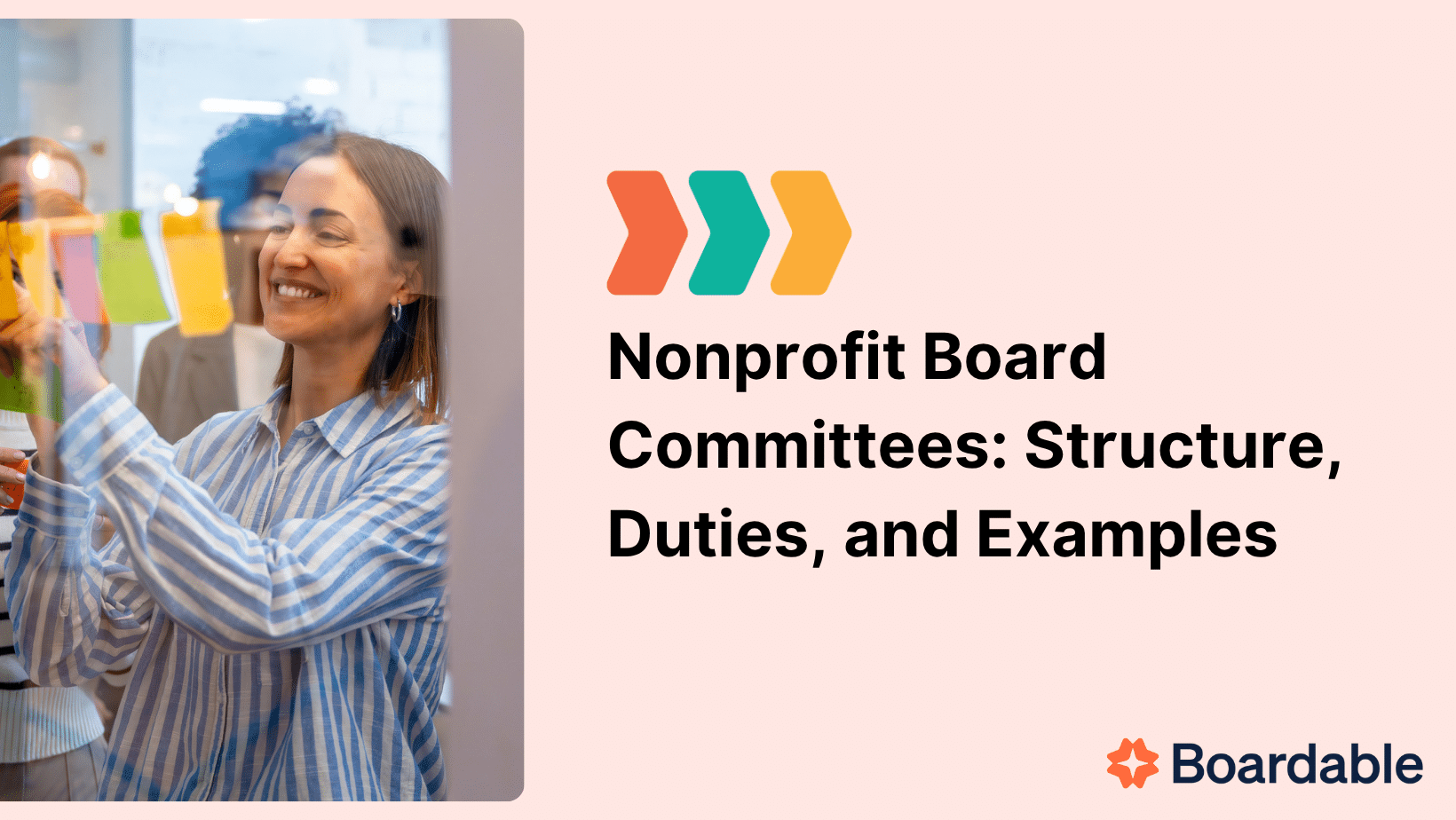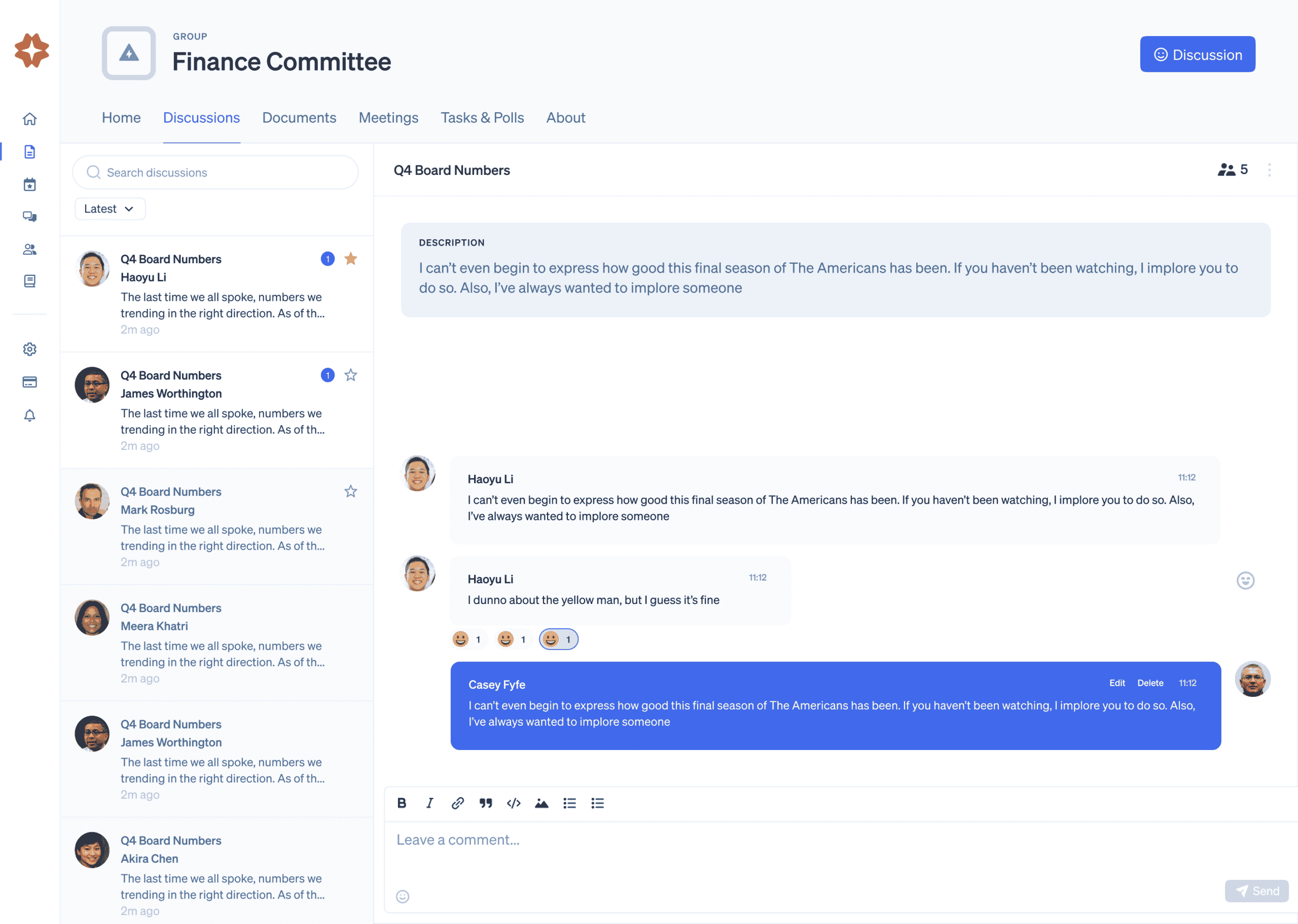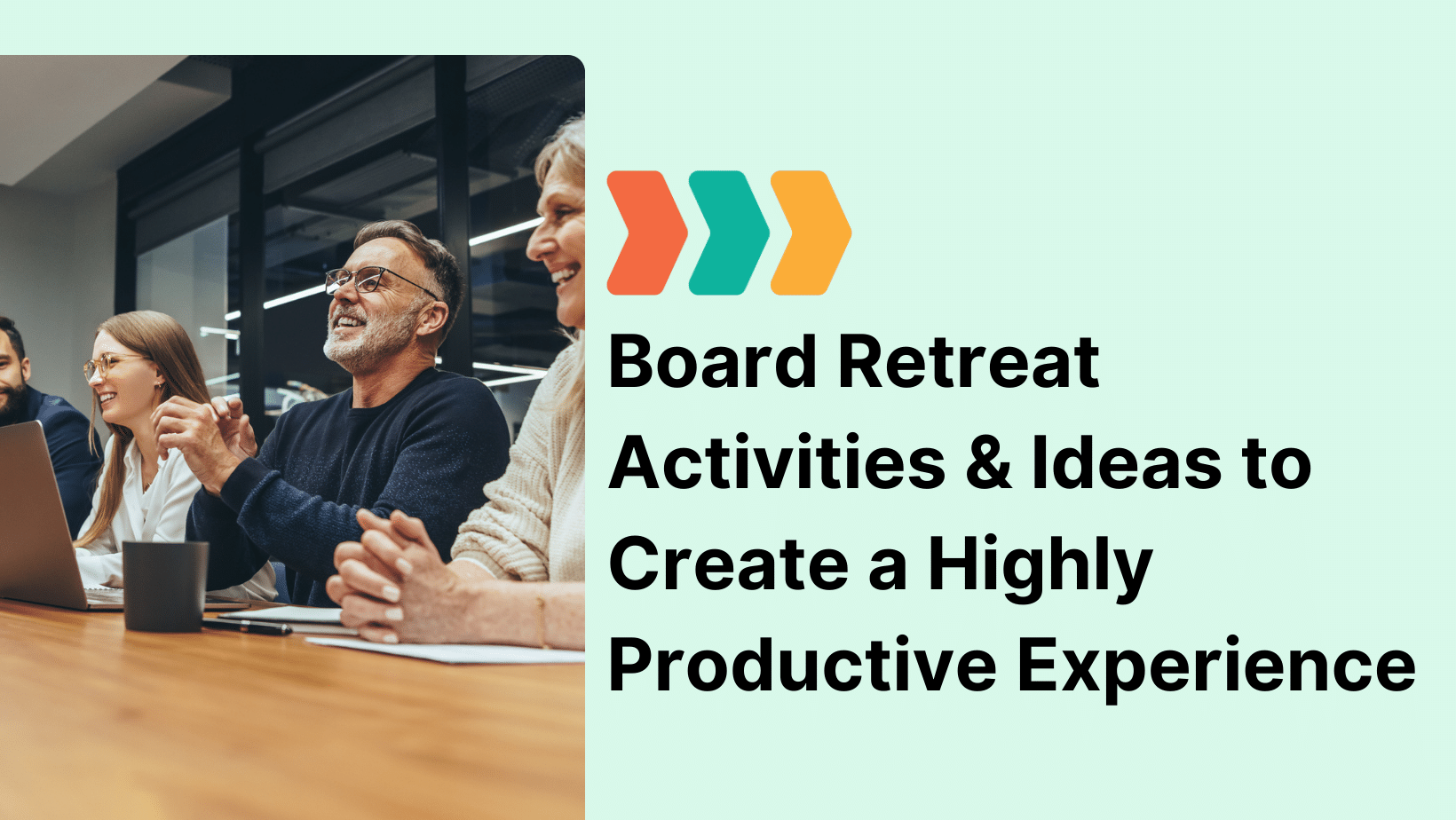Nonprofit board committees are the engine that turns board strategy into day-to-day impact. When designed well, a committee harnesses specialist skills, shortens decision cycles, and keeps full-board meetings focused on what matters most. If you’re questioning whether your current structure still serves your mission—or you’re creating committees for the first time—this updated guide walks you through everything you need to know.
Whether you are expanding your committees or looking to scale existing ones back, you can find these topics in this article:
- What is the purpose of board committees?
- What are typical board committees?
- What are the responsibilities of a board committee member?
- What nonprofit board committee structure works best?
- Conclusion and free downloads!
What is a Nonprofit Board Committee?
A board committee is a small, mission-focused workgroup—made up of directors, staff, and sometimes subject-matter volunteers—that researches issues, proposes solutions, and, where authorized, makes decisions on behalf of the board. Committees allow the board to dive deep without bogging down full-board meetings.
Most importantly, board committees are a way to leverage the knowledge of a larger group of people to help the board make the best decisions possible.
Committee vs. Task Force
- Standing Committee: Permanent and outlined in the bylaws (e.g., Governance, Finance).
- Ad-Hoc or Task Force: Formed for a single initiative with a defined sunset date (e.g. Capital Campaign Task Force)
Now that we know the general definition of a board committee, why should we bother forming them? When done right, they diffuse the amount of work required of each board member, while concentrating the amount of expertise available for a topic into a select group of people. Let’s dig more into the reasons for establishing various nonprofit board committees.
What is the purpose of nonprofit board committees?
Board committees allow necessary work to be distributed evenly throughout your board. This allows for the best allocation of talent and ensures that work gets done. When you break your goals and responsibilities down into more manageable pieces with a clear organizational structure, your board doesn’t have to get bogged down worrying about who is responsible for which task.
For most nonprofit boards, committees provide the following benefits:
- Clearly define responsibilities for specific members
- Empower committee members to work at their own pace and remove routine tasks from the monthly agenda
- Put the skills and talents of your board members to the best possible use
- Research, make recommendations, and present options to the board at large

8 Essential Nonprofit Board Committees
Each committee your board creates needs to have its own mission and reason for being. It should also have a defined set of responsibilities.
If board members must serve on more than one committee, you may have too many committees. Most boards have 12-16 members. If you have more than 4 committees, your board members may feel that they must serve on multiple committees.
You can lose great people if the committee work isn’t really a good use of their time. That’s why it is crucial to only have the committees you actually need. Here is a list of typical nonprofit board committees that many organizations implement.
Executive / Steering Committee
These members, which usually include the chairs from other committees, the board chair and others, take on the “big picture” tasks and steer the group towards success. Planning, creating other committees, creating an agenda for the group, and tackling other large-scale tasks are handled by this group.
Standing Committee
These are permanent groups that meet regularly and only change with the arrival or departure of members from the board. These groups help monitor progress, make plans, and report to the main body on their specific subject areas. Standing committees often cover finance, marketing, communications, budgets, and more.
Your board recruitment team is also likely a standing committee, sometimes part. This group would be responsible for recruiting new members from the community, onboarding, and tracking terms for board members.
Ad-Hoc Work Committee
Some nonprofit board committees are only needed for part of the year or for specific events. If you do annual fundraisers, galas, volunteer gatherings or events and other one-time or yearly programs, a board committee may be assembled for each. Ad-hoc committees are a great way to keep your organization from being overloaded with too many standing committees that don’t have enough to do year-round.
Fundraising Committee
At a nonprofit with development staff, the fundraising committee supports its work through donor appreciation activities, fundraising campaign support, corporate sponsorship or donation procurement, and so on.
For a nonprofit without a development staff, the fundraising committee might do all the previously mentioned activities, as well as more tactical activities like annual campaigns and fundraising events.
Finance Committee
The finance committee supports your board’s fiduciary oversight and planning by taking on bigger questions than just budgeting and account management. This committee may focus on longer-term projects like investments, capital campaigns, lines of credit, and rainy day reserve funds.
Governance and Nominating Committees
While these were traditionally separate standing committees, most nonprofits now combine the duties of both into the governance committee. The periodic work of nominating new board members can be done along with reviewing bylaws, overseeing executive director employment, and leading board evaluations.
Communications and Public Relations Committees
No nonprofit wants the media randomly picking a board member to ask about news relating to the organization. This is what the communications and PR committee is for! Members of this committee provide internal communication, help produce newsletters and official statements, manage social media, and act as the contact point for any media requests.
Audit Committee
A system of checks and balances helps a nonprofit avoid ethical issues. The audit committee conducts an annual review of all the nonprofit’s finances and ensures the board is ready to answer any regulatory questions accurately. This board committee acts as a supplement to the Finance Committee and board treasurer.
Responsibilities of a Board Committee Member
Committee members may be board members, staff members, or volunteers, depending on how the committee (or subcommittee) has been formed. Members should know what they can and can’t do, and whether they can make actual decisions on matters that fall into their subject area.
Ideally, a board committee member should:
- Have unique knowledge, experience, or resources regarding the board committee’s purpose. For example, those with an accounting or bookkeeping background may be on a financial management committee. Those with a marketing or advertising background may be on a fundraising committee.
- Be motivated to work with others towards a common goal. A board committee is a focused group of individuals who are trying to actively work towards specific goals. It’s important for nonprofit committee members to be self-motivated, as well as able to work easily with others.
- Have the ability to prioritize. A single individual may be on multiple committees and subcommittees, in addition to doing their own work with the board. Thus, a board committee member often has to be able to prioritize their work depending on how vital it is to the nonprofit.
- Be available for committee meetings and projects. Serving on a nonprofit board and within a committee or subcommittee requires a large amount of time. Any individuals on a nonprofit committee will need to dedicate a significant amount of time to the committee and its actions.
What nonprofit board committee structure works best?
What committees are required in your bylaws? How many committees do you have? What are the functions of your nonprofit board committees? Are board members serving on more than one committee? Do some committees struggle with what work they should be doing? Be sure you can answer all these questions before starting a new board committee.
Nonprofit Board Committees Need Leadership
A committee should have a leader who can help guide the group, report to the board at large, and communicate needs and requests to the organization and staff. Committees should have easy access to key staff members that closely align with their responsibilities and subject area. This ensures that your nonprofit board committees can build relationships with staff and know who to reach out to if information or assistance is needed.
More Tips for Board Committee Structure Success
Naturally, the needs of each board committee will vary somewhat depending on your nonprofit size and mission. However, there are some guidelines that apply to all nonprofit board committees, regardless of size or purpose. Here are some more tips for success.
- Avoid making board committees too large, as it becomes difficult to make decisions as a unit. A committee that has grown too large may also have an unfair amount of influence on the nonprofit organization itself.
- Likewise, avoid making committees too small, as the committees may become too insular to reflect the goals of the organization as a whole. Committees that are too small may also not have sufficient resources to be truly effective.
- Carefully consider whether new board committees are needed, as not every project truly requires one. Rather, subcommittees can be created under existing committees to manage specific tasks.
- Ensure that committees are appropriately engaging and meeting, and have processes in place to audit the health of each committee. Otherwise, it can be easy for an organization to start to fall apart.
- Consider how committees will be able to check their own progress as well as be evaluated by other committees. This system of checks and balances ensures that the entire organization operates smoothly.
- Be sure each nonprofit board committee has its own bylaws that spell out its purpose, goals and timeline, leadership positions, and when (or if) the committee will be dissolved.
Well-crafted nonprofit board committees transform good intentions into measurable results. Review your structure annually, refresh charters, and leverage tools like Boardable’s Groups to keep every committee organized and impactful.
Ready to streamline your committees? Request a live demo to explore our solutions for board members to see how Boardable drives engagement before, during, and after meetings.




